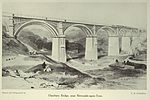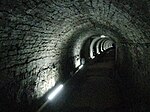The Cluny
Buildings and structures in Newcastle upon TyneCulture in Newcastle upon TyneFlaxMusic venues in Tyne and WearTextile mills in England ... and 1 more
Tourist attractions in Newcastle upon Tyne

The Cluny is a 300-capacity live music venue, pub and café, on Lime Street, in the Ouseburn Valley area of Newcastle upon Tyne, England. Based in a former flax spinning mill, The Cluny occupies part of the wider building at 36 Lime Street, sharing the space with artists, offices and recording studios. The Cluny is a regular fixture in the top 100 list of World's Best Bars,
Excerpt from the Wikipedia article The Cluny (License: CC BY-SA 3.0, Authors, Images).The Cluny
Lime Street, Newcastle upon Tyne Battle Field
Geographical coordinates (GPS) Address Phone number Website External links Nearby Places Show on map
Geographical coordinates (GPS)
| Latitude | Longitude |
|---|---|
| N 54.97517 ° | E -1.59175 ° |
Address
The Cluny
Lime Street 36
NE1 2PQ Newcastle upon Tyne, Battle Field
England, United Kingdom
Open on Google Maps








